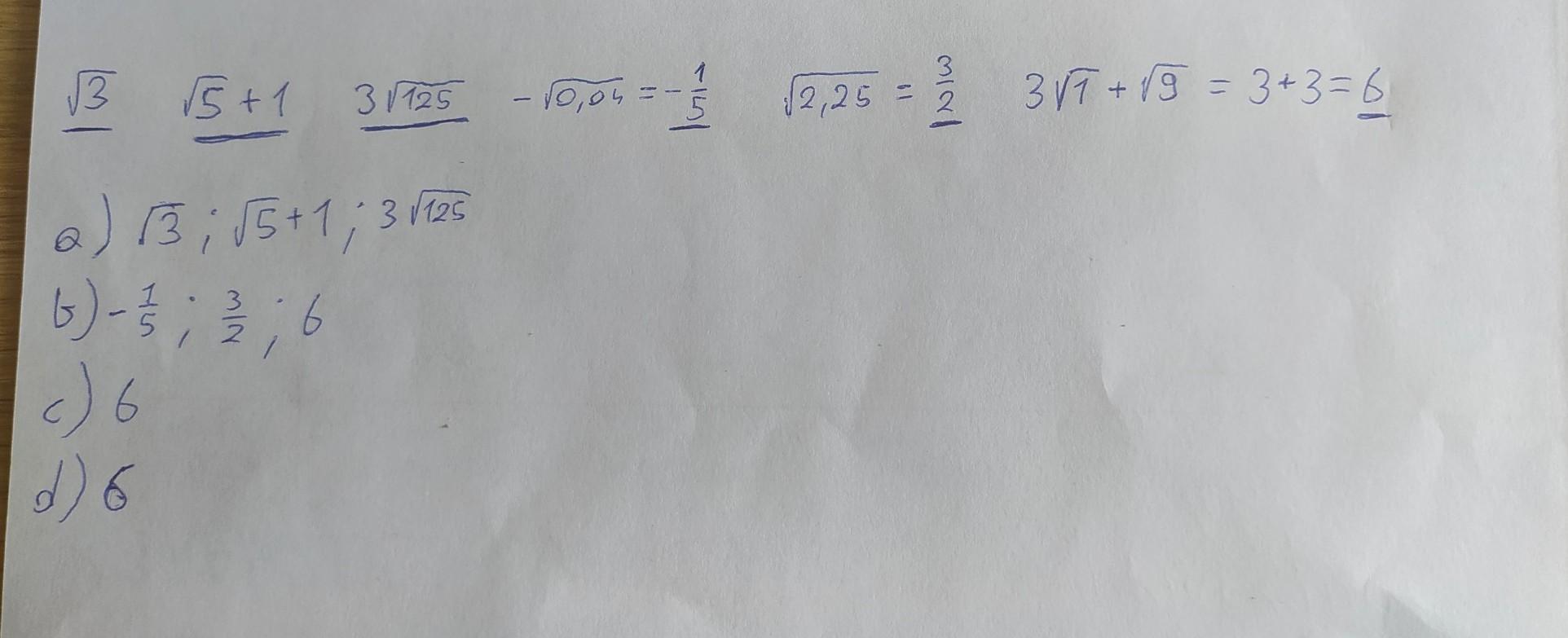Niech n 1 będzie liczbą całkowitą. Wykaż, że istnieje taka liczba całkowita, której kwadrat jest większy od 2n i mniejszy od 5n.
-
Temat:
Matematyka -
Autor:
brewster -
Utworzono:
1 rok temu
Odpowiedzi 1
[tex]D: n\in C \text{ oraz } n > 1[/tex]
[tex]2n < n^2 < 5n\\\\2n < n^2 \text{ v } n^2 < 5n\\\\I. \\\\n^2 > 2n /-2n\\n^2-2n > 0\\\Delta=(-2)^2-4*1*0=4\\\sqrt{\Delta}=2\\n_1=\frac{2-2}2=0\\n_2=\frac{2+2}2=2\\n\in(-\infty; 0)U(2; \infty)\\(-\infty;0) \notin D\\\\n\in (2; \infty)[/tex]
[tex]II. \\\\n^2 < 5n /-5n\\n^2-5n < 0\\\Delta=(-5)^2-4*1*0=25\\\sqrt{\Delta}=5\\n_3=\frac{5-5}2=0\\n_4=\frac{5+5}2=5\\n\in(0; 5)\\(0; 1 > \notin D\\\\n\in (1; 5)[/tex]
Czesc wspolna zbiorow I i II
[tex]n\in(2; 5)\\[/tex]
Liczby w tym zbiorze spelniajace zalozenia z dziedziny (rozwiazania)
[tex]\bold{\underline{n = \{3, 4\}}}[/tex]
_____________________________________________________
Sprawdzamy:
[tex]\text{Dla n=2}\\2*2 < 2^2 < 5*2\\4 \nless 4 < 10\\\\\text{Dla n=3}\\2*3 < 3^2 < 5*3\\6 < 9 < 15\\\\\text{Dla n=4}\\2*4 < 4^2 < 5*4\\8 < 16 < 20\\\\\text{Dla n=5}\\2*5 < 5^2 < 5*5\\10 < 25 \nless 25[/tex]
-
Autor:
big guybtym
-
Oceń odpowiedź:
8

